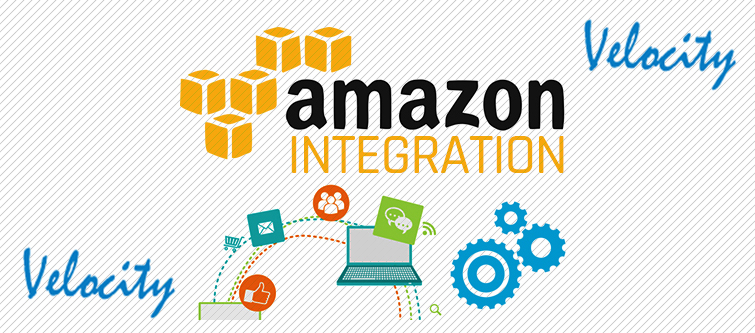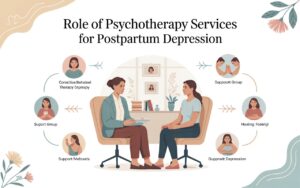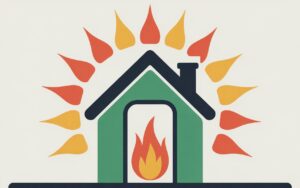The Software as a Service (SaaS) model has transformed the way businesses operate, offering software solutions over the internet on a subscription basis. Developing a SaaS product involves a distinct approach compared to traditional software development, as it requires not only technical excellence but also an understanding of cloud infrastructure, security, and user-centric design. In this guide, we’ll cover everything you need to know about the SaaS product development process, focusing on the SaaS product development lifecycle, agile SaaS development, and how to choose the right SaaS development services company to bring your vision to life.
What is SaaS Product Development?
SaaS product development refers to the process of building, testing, deploying, and maintaining software applications that are accessible to users over the internet, typically through a subscription model. SaaS products are hosted in the cloud, which means they are accessible anytime and anywhere, with no need for local installation. Popular examples of SaaS products include Google Workspace, Salesforce, Slack, and Dropbox.
The SaaS model offers numerous advantages, such as reduced IT costs, easy scalability, and frequent updates. However, it also requires robust security, high uptime, and an intuitive user experience. Let’s delve deeper into the stages of the SaaS product lifecycle and the methodologies that ensure the successful development of these products.
SaaS Product Development Lifecycle
The SaaS product development lifecycle involves several phases, each of which is essential for creating a reliable and scalable product. Here’s a breakdown of each stage:
1. Ideation and Market Research
Before you start building your SaaS product, you need to validate the idea. This involves understanding your target market, identifying customer pain points, and evaluating your competition. Conduct thorough market research to determine the demand for your solution and how it differentiates from existing products.
- Key Activities: Define product goals, identify key features, and analyze competitor products.
- Outcome: A clear product concept backed by market validation.
2. Requirement Gathering and Planning
Once the product idea is validated, the next step is to gather detailed requirements for the software. This includes outlining the features, user roles, and technical specifications needed for your SaaS product. You should also define the project scope, timeline, budget, and technology stack during this phase.
- Key Activities: Create a product roadmap, define technical architecture, and set project milestones.
- Outcome: A comprehensive project plan and feature list.
3. Design and Prototyping
The design phase involves creating wireframes, prototypes, and the overall user interface (UI) for the SaaS product. It’s crucial to focus on a user-friendly design that simplifies the customer journey and ensures easy navigation.
- Key Activities: Develop UI/UX designs, create prototypes, and validate the user experience with stakeholders.
- Outcome: Wireframes and prototypes that give a visual representation of the final product.
4. Development
In the development phase, the SaaS product is built using the defined technology stack. This phase involves coding, integrating third-party services, and developing the front-end and back-end components. Typically, an agile SaaS development approach is used, where the product is developed incrementally, allowing for continuous feedback and improvement.
- Key Activities: Write code for front-end and back-end, integrate cloud services, and perform unit testing.
- Outcome: Functional SaaS product modules, ready for testing.
5. Testing and Quality Assurance
Once the core functionalities are developed, the product undergoes rigorous testing to identify and fix bugs, ensure performance optimization, and guarantee security. This stage includes various types of testing such as functional testing, load testing, security testing, and usability testing.
- Key Activities: Conduct automated and manual tests, ensure data security, and optimize performance.
- Outcome: A bug-free, secure, and performance-optimized SaaS product.
6. Deployment
After the product passes testing, it is ready to be deployed. The deployment phase involves releasing the SaaS product to the cloud infrastructure, making it accessible to users. Continuous integration and deployment (CI/CD) tools are often used to automate this process and ensure a smooth launch.
- Key Activities: Set up cloud hosting, configure domain settings, and deploy the product.
- Outcome: SaaS product available for end-users.
7. Maintenance and Updates
The product lifecycle doesn’t end with deployment. Ongoing maintenance is critical to the success of any SaaS product. This includes fixing bugs, releasing new features, scaling the product, and ensuring uptime. The SaaS development services company you partner with should offer regular updates and support to ensure that your product continues to meet the evolving needs of users.
- Key Activities: Provide customer support, release updates, and monitor system performance.
- Outcome: Continuous product improvement and satisfied customers.
Agile SaaS Development: Why It Matters
Agile SaaS development is a popular methodology that emphasizes iterative development, flexibility, and customer feedback. Unlike traditional waterfall models, agile development focuses on delivering the product incrementally in short cycles, known as sprints. This allows for quick adaptation to changes and ensures that the product remains aligned with user expectations.
Here are a few reasons why agile SaaS is ideal for SaaS product development:
- Faster Time-to-Market: Agile enables faster delivery of core functionalities, allowing businesses to release a minimum viable product (MVP) and gather real-time feedback from users.
- Customer-Centric: Agile development focuses on customer feedback at every stage, ensuring that the product evolves based on real user needs.
- Flexibility: The agile approach allows teams to adapt to changes in requirements, technology, or market conditions without disrupting the entire development process.
- Continuous Improvement: Regular updates and improvements are possible with agile, keeping the product competitive in a fast-changing market.
Choosing the Right SaaS Development Services Company
Partnering with the right SaaS development services company can make or break your product’s success. Here are some factors to consider when choosing a partner:
- Experience and Expertise: Look for a company with a proven track record in SaaS product lifecycle development, particularly in your industry. The company should have experience with cloud platforms, data security, and scalable solutions.
- Agile Practices: Choose a company that follows agile development methodologies. This ensures flexibility, faster time-to-market, and a customer-centric approach.
- Security Focus: SaaS products deal with sensitive customer data. Your development partner should prioritize security, employing robust encryption and adhering to industry standards for data protection.
- Scalability: Ensure that the company can develop a scalable product, allowing you to add new features and expand your user base without major technical hurdles.
- Support and Maintenance: A good SaaS development company will offer post-launch support, ensuring your product stays updated, secure, and functional.
Conclusion
Building a successful SaaS product requires careful planning, agile development practices, and a deep understanding of user needs. By following the SaaS product development lifecycle, you can ensure that your product is scalable, secure, and able to meet the demands of the market. Partnering with an experienced SaaS development services company like Kryoverse Innovations will give you the expertise and support you need to bring your vision to life. Whether it’s cloud integration, custom development, or ongoing maintenance, having the right partner is essential for long-term success in the SaaS industry.









